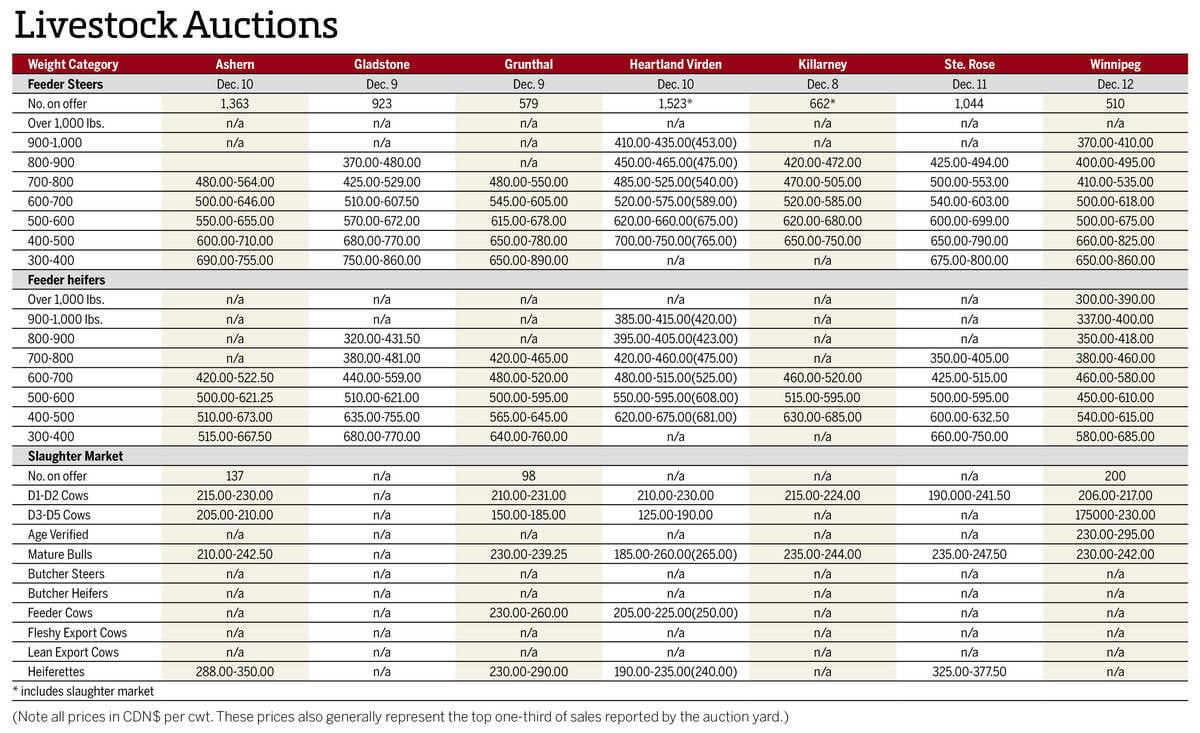The Canadian canola market was hit with a double whammy of sorts on March 7.
Hours after trading ended for the day at the Intercontinental Exchange, China announced it was exacting its delayed revenge against Canadian tariffs put in place last year on its electric vehicles, steel and aluminum by imposing 100 per cent tariffs on Canadian canola oil and meal, and other goods including pork and seafood.
All of this while United States President Donald Trump put levies on Canadian imports, prompting Canada to respond in kind on American imports.
Read Also

Manitoba cattle prices Dec. 16
Here’s what local farmers were getting paid last week for their cattle at Manitoba livestock auction marts; prices covering the week Dec. 8-12, 2025.
Since the May contract closed March 7 at $645 per tonne, it lost $78.10 in four sessions, fell more than $60 below the major moving averages and dipped below 30 in the relative strength index, indicating the contract as being oversold. Not only did the May contract hit a new low, but the July, November and January contracts ended March 13 below $600/tonne and the funds have heavily liquidated their net long positions.
Despite the presence of a “dead cat bounce” early in trading on March 13, there is little indication that canola will recover any time soon.
China already made its intentions known last year by initiating an anti-dumping investigation into Canadian canola, leading buyers to front-load on the oilseed early in the marketing year. While canola seed was not part of the Chinese tariffs, it could be in the future.
Add in the reckless and reactionary, incendiary and impulsive, isolationist and protectionist Trump administration, it’s little wonder canola buyers are staying pat.
If prices go low enough, bargain buying could eventually become an option, but demand would have to come from outside Canadian canola’s two biggest trading partners. Japan has purchased more than 800,000 tonnes of canola seed this marketing year, while South Korea and Mexico have combined to buy more than 102,000 tonnes of canola oil. However, these figures are dwarfed by the amount of product the U.S. and China has bought already this year. Meanwhile, European rapeseed is trading at its lowest prices since last September.
There is no way to determine what will happen to trade policies next month or next week. With only the past and present to guide us where to go, some canola acres could shift to wheat, barley or flax if there are time and flexibility to do so.
















